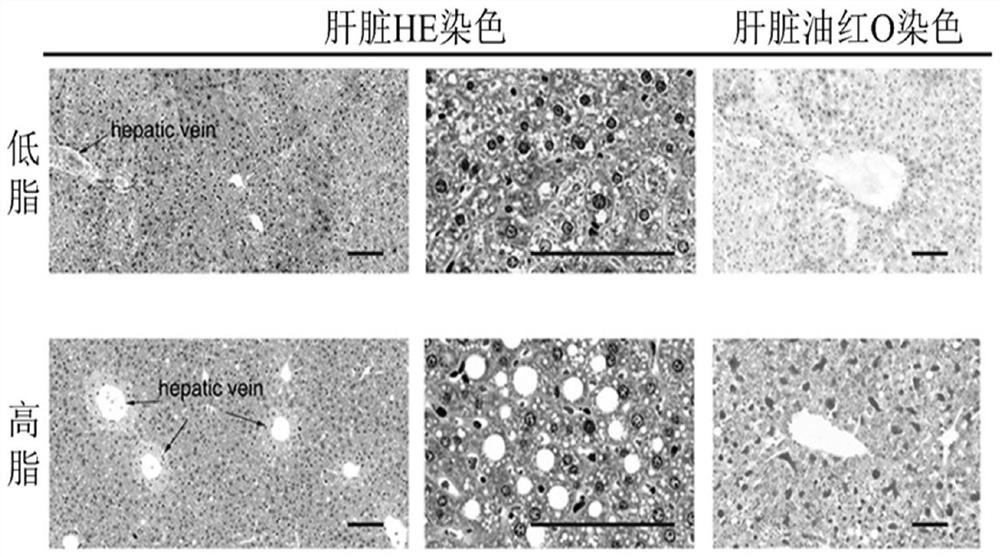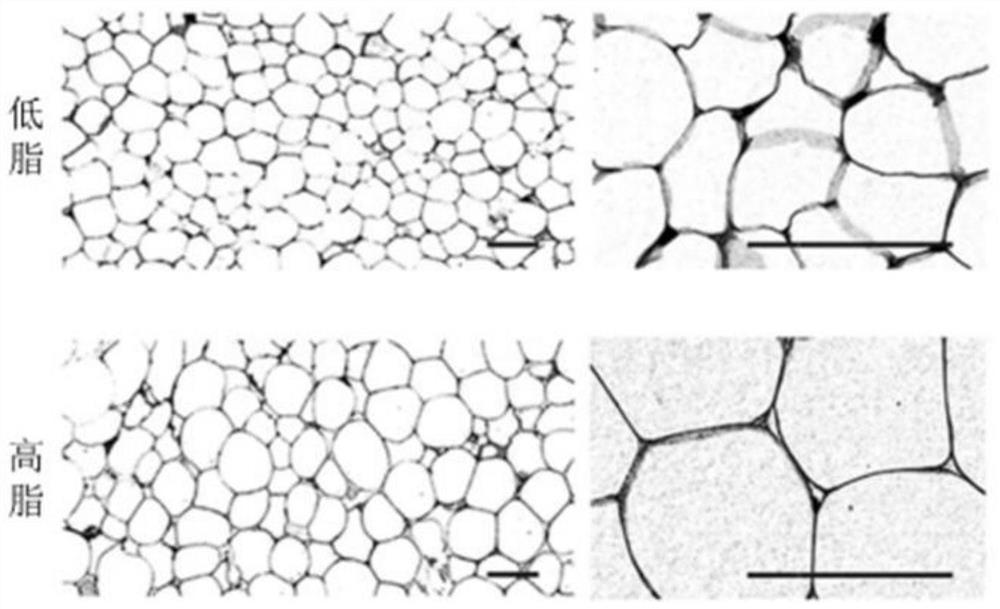High-fat feed for inducing obesity and non-alcoholic fatty liver model and production process of high-fat feed
A non-alcoholic, high-fat feed technology, applied in the molding or processing of animal feed, animal feed, application, etc., can solve the problem of not being able to simulate the occurrence of obesity, lack and other problems, and achieve low cost, high repetition rate, Characterize a significant effect
- Summary
- Abstract
- Description
- Claims
- Application Information
AI Technical Summary
Problems solved by technology
Method used
Image
Examples
preparation example
[0032] A high-fat feed for inducing obesity and non-alcoholic fatty liver model, consisting of the following raw materials in parts by weight:
[0033] 31.66 parts of lard, 24.55 parts of casein, 15.15 parts of maltodextrin, 8.89 parts of sucrose, 2 parts of fructose, 6.46 parts of cellulose, 3.9 parts of L-cystine, 0.3 parts of methionine, 3.23 parts of soybean oil, 2.13 parts of potassium citrate 1.68 parts of calcium hydrogen phosphate, 0.71 parts of calcium carbonate, 0.26 parts of choline bitartrate, 1.29 parts of vitamin mixture, and 1.29 parts of mineral mixture;
[0034] The vitamin mixture consists of the following raw materials in parts by weight:
[0035] 0.08 part of vitamin A acetate, 0.15 part of vitamin D3, 1.2 part of vitamin E acetate, 0.008 part of menadione sodium bisulfite, 0.2 part of biotin, 0.1 part of cyanocobalamin, 0.02 part of folic acid, 0.3 part of niacin, 0.16 parts of calcium pantothenate, 0.07 parts of pyridoxine hydrochloride, 0.06 parts of ri...
experiment example
[0047] Adopt the high-fat feed involved in the present invention to induce obesity and the verification test data of fatty liver in mice as follows:
[0048] (1) Experimental design
[0049] Thirty-two C57BL / 6J mice aged about 6 weeks were selected, and after 7 days of pre-feeding, the mice were randomly divided into 2 groups with 16 repetitions in each group to ensure that there was no significant difference in body weight between groups (ANOVA analysis). The control group was fed with low-fat feed, and the induction group was fed with the high-fat feed prepared in Example 1. The feeding test period was 12 weeks. During the test period, ad libitum feeding and drinking were ensured, room temperature (23° C.) was maintained, and single cages were raised. During the experiment, weighing was performed every 3 days, litter was replaced once, and drinking water was replaced once, and the food intake of mice was recorded every day.
[0050](Contrast low-fat feed formula: 47.68 part...
PUM
 Login to View More
Login to View More Abstract
Description
Claims
Application Information
 Login to View More
Login to View More - R&D Engineer
- R&D Manager
- IP Professional
- Industry Leading Data Capabilities
- Powerful AI technology
- Patent DNA Extraction
Browse by: Latest US Patents, China's latest patents, Technical Efficacy Thesaurus, Application Domain, Technology Topic, Popular Technical Reports.
© 2024 PatSnap. All rights reserved.Legal|Privacy policy|Modern Slavery Act Transparency Statement|Sitemap|About US| Contact US: help@patsnap.com










